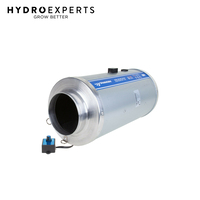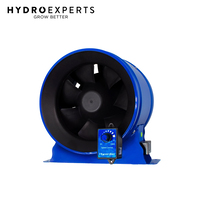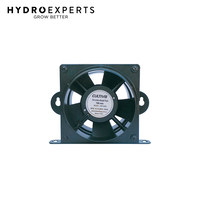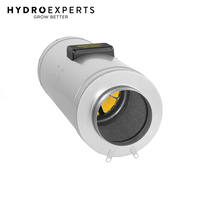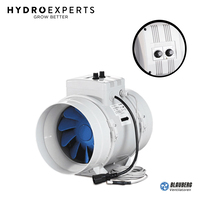Why Choose a Mixed Flow/Diagonal Fan for Efficiency
By FanManDan | 28 November 2019
Exploring Fan Types:
Axial Fans: Optimized for High Volume, Low Pressure
For applications needing large volume flow rates at low pressures, axial fans are the ideal solution. They have a wide surface area, which makes them perfect for heat exchange systems like condensers and evaporators as well as ventilation systems (like extract fans).
Forward Curved Centrifugal Fans: Balancing Pressure and Flow
Forward-curved centrifugal fans used in scroll housings have a steep pressure characteristic that produces higher pressure with a lower flow rate. They are used in fan coils and particulate or odour filtration systems where a high-volume flow is required in a small space (Single Inlet Blower and Double Inlet Blower).
Backward Curved Fans: High Efficiency and Low Noise
Backward curved fans, which are well known for their excellent efficiency, give a non-overloading performance with a medium volume flow at medium pressures. In air handling and air conditioning devices, where low noise and great efficiency are essential, these fans are often found.
Tangential or Cross Flow Fans: Creating Laminar Flow
Tangential or Cross Flow fans generate a wide laminar flow at high velocity. While not always seen, they are commonly experienced in shop doorways or behind the outlet of a domestic fan assisted electric fire.
Hybrid Fan Solutions: Merging Axial and Backward Curved Attributes
In certain applications, a hybrid fan that combines the best features of axial and backward curved fans is necessary. For instance, on the ATCA platform, space limitations led to the discovery that neither an axial fan nor a backward curved fan met the requirements individually.
.png)
The Mixed Flow Advantage
Axial fans deliver high volume flow at low pressure and a backward curved centrifugal fan delivers medium volume flow at higher pressure. In the case of the ATCA platform, the space available to install the fan meant that an axial fan didn’t produce enough pressure whilst the backward curved fan did not produce enough flow rate.
One option to solve this problem would be to choose a DC compact fan with a high-speed motor rotating at several thousand revolutions per minute. Producing the volume and pressure required draws a significant amount of power from the supply, reducing the amount of time an uninterruptable battery back-up power supply system (UPS) can operate. Another consideration that needs consideration is the noise output from a high-speed fan when operating at the required duty point.
An alternative option that could be considered is a Mixed Flow fan which combines some of the high-volume flow aspects of the axial fan with the pressure delivery of the backward curved centrifugal fan. The air intake to a mixed flow fan is in an axial direction where it is picked up by Hybrid design impeller blades with axial and radial elements that deflect the air outwards at a diagonal angle in the region of 45o. This combination of forces on the air passing through the impeller maintains a high flow rate whilst boosting the pressure on the exhaust of the fan. This performance can be delivered at speeds that do not put an unnecessary load on the power supply whilst delivering the performance quietly.
For this reason, a mixed flow fan is an ideal choice to bridge the performance gap between Axial and backward curved centrifugal fans.
EC vs. AC Fans: Unraveling the Efficiency of EC Fans
Understanding EC Technology
Electronically Commutated (EC) fans are a significant advancement in energy-efficient air movement technology. They differ from conventional DC fans in that they use a brushless DC motor, which does away with the requirement for carbon brushes and a commutation ring.
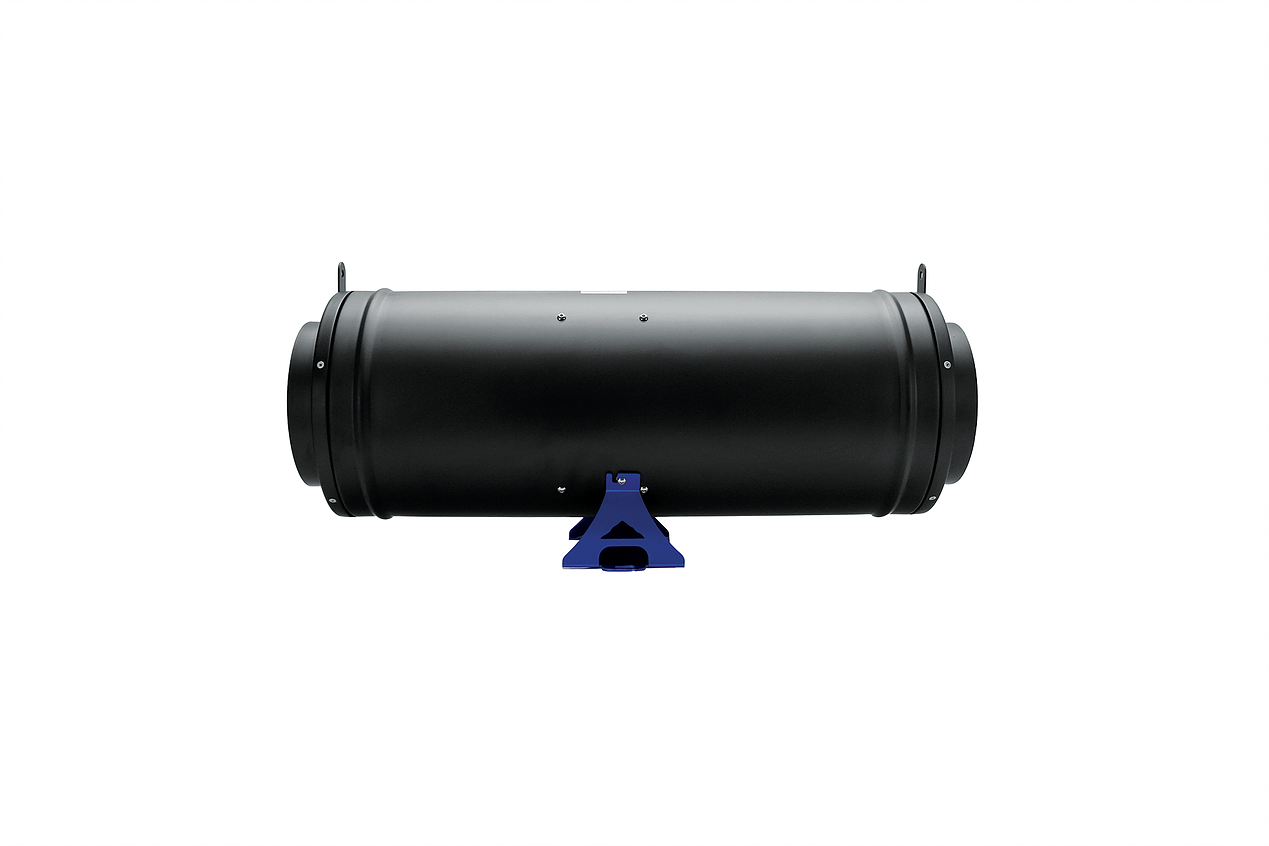
DC vs. EC Motors: Efficiency Unleashed
While EC fans use electronic circuitry for precise motor control, basic DC motors use carbon brushes for communication. A motor that is around 30% more efficient than its AC counterpart. A separate DC power supply is not required with EC fans, which lowers cost and complexity.
The Control Advantage: Tailoring Speed for Efficiency
Customized Control Options
EC fans' built-in electronics enable ongoing motor speed monitoring and modification. This opens up a variety of control choices, including closed-loop management of variables like temperature and pressure as well as straightforward speed adjustments.
Energy Efficiency Through Speed Modulation
Matching fan speed to demand is crucial for energy efficiency. EC fans excel in this regard, offering significant energy savings compared to on/off operations. Additionally, they contribute to the overall efficiency of applications, reducing the load on compressors in cooling systems.
AC vs. EC: Efficiency Beyond Limits
Efficiency Across Operating Range
While EC motors retain a virtually flat efficiency curve over a wide speed range, AC motors have a fixed operating point where efficiency is at its highest. Because of its adaptability, EC fans are ideal for a wide range of applications and offer improved efficiency without compromising performance.
Expanding Range of AC Input EC Fans
There are more possibilities for different applications thanks to the expanding selection of AC input EC fans. Because they frequently exchange directly with their AC equivalents, manufacturers have the chance to include energy-efficient technologies in their goods.
Conclusion: Embracing Energy Efficiency with EC Fans
Embracing EC fan technology is a step towards achieving energy-efficient airflow management. From eliminating the need for separate power supplies to offering customized control options, EC fans bring a new level of efficiency to various applications. Manufacturers have a compelling reason to include EC fans in their product portfolios as the demand for energy-efficient systems continues to rise.




